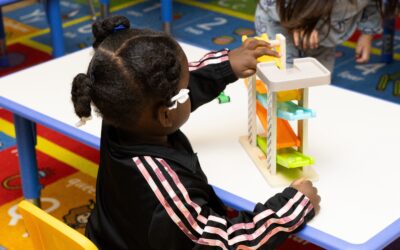Planning a family vacation can be one of the most exciting yet daunting tasks for parents. The thrill of exploring new places and creating cherished memories is a powerful motivator. However, for parents of a child with autism, this excitement is often accompanied by a sense of nervousness. Will my child transition smoothly? How will they regulate their emotions and manage the overwhelming changes in the environment? These questions constantly run through our minds as we strive to balance our desire for adventure with the need for stability and comfort for our child. With parents in mind, here are five tips that have helped my family create memorable vacations while accommodating our child’s unique needs.
1. Prepare Your Kiddo
Preparing your child for the trip can help ease the transition. Reading stories about traveling and creating a visual countdown calendar can build excitement and help your child understand that an exciting change is coming.
Parent Tip: Engage your kiddo in the countdown by marking off days on the calendar, creating a countdown chain and or start a list of the fun activities you have planned. Share the travel news with your BCBA and they can work with you to develop a plan for your upcoming travel. BCBAs can step in to help with desensitization around useful tools such as wearing a seat beat on a plane, wearing noise cancelling headphones, etc.
2. Create a Visual Schedule
Children with autism often thrive on routine and predictability. Creating a visual schedule of your vacation can help them understand what to expect and reduce anxiety. Use pictures, icons, or a simple timeline to map out each day’s activities, including travel times, meals, and rest periods.
Parent Tip: Involve your kiddo and allow opportunity for your child to choose between an activity or attraction. This not only makes them feel included but also gives them something to look forward to & have an opportunity to be in control about. Consider partnering with your BCBA at your ABA therapy center to create a visual schedule!
3. Prepare an Exciting Travel Kit
A new environment can be overwhelming for a child with autism. Packing a travel kit with their favorite items can provide comfort and help manage sensory overload. Think about exciting activities that can entertain; stickers, coloring books, suction toys/window clings (great for airplane or car travel). Consider additional items like noise-canceling headphones, fidget toys, weighted blankets, or anything else that helps soothe and calm your child.
Here are the top three sensory travel toys to include:
- Fidget Spinners or Fidget Cubes: These small, handheld toys can help keep your child’s hands busy and provide a calming sensory experience during the drive.
- Sensory Chew Toys: Designed for kiddos who need oral sensory input, these toys can help soothe and calm during long car rides.
- Interactive Books or Tablets with Educational Apps: These can keep your child engaged with interactive stories, games, and educational content tailored to their interests and needs.
Parent Tip: Familiarize yourself with potential sensory triggers at your destination, such as loud noises, crowds, or bright lights, and plan accordingly. Having a designated quiet space to retreat to can make a big difference. Consider toys that your kiddo gravitates to at their ABA therapy center!
4. Practice Travel Scenarios
Traveling, whether by car, plane, or train, can be stressful for any child, but especially for one with autism. To ease the transition, practice different aspects of travel beforehand. Take short trips to similar environments, practice waiting in lines, and role-play security checks or boarding procedures.
Parent Tip: Social stories can be a fantastic tool to prepare your child for the journey. Talk to your BCBA about making a specific social story about your child and the destination you’re headed! These are simple, descriptive stories that explain what will happen during the trip, helping your child understand and anticipate the experience.
5. Plan for Downtime
While it’s tempting to pack your itinerary with exciting activities, it’s essential to schedule regular downtime. Children with autism may need more breaks to decompress and avoid sensory overload. Balance busy outings with quiet time at your accommodation or low-key activities like a picnic or a leisurely walk.
Parent Tip: Keep meals and bedtime routines as consistent as possible. Familiarity can be very comforting for a child with autism and can help maintain a sense of normalcy amidst the changes in environment.
As a parent, I recognize that every child is different and in addition, every child with autism is unique. Every child with autism is unique, and what works for one may not work for another. The key to a successful family vacation is flexibility, preparation, and a willingness to adapt as needed. By considering your child’s specific needs and planning accordingly, you can create a vacation experience that is enjoyable for the entire family. Remember, the goal is to make happy memories together, and with a bit of extra effort, it is entirely possible.
Happy Travels,
Megan Leinonen
Neurodivergent Parent
Director of Marketing & Outreach
The Place for Children with Autism



